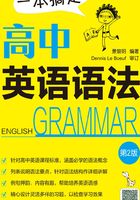
四、 数学运算
❶ 加法:在正式文体中或数目较大的加法时,通常用介词 plus来表示“+”,谓语动词用单数形式is或equals来表示“=”;在非正式文体中,可以用 and来表示“+”,谓语动词可以是单数is或equals,也可以是复数形式are或equal。
◇ 150+38=188 (大数目)
One hundred and fifty plus thirty-eight is/equals one hundred and eighty-eight.
◇ 3+5=8(小数目)
Three plus five is/equals eight. (正式文体)
=Three and five is/are eight.=Three and five equals/equal eight. (非正式文体)
❷ 减法:在正式文体中或数目较大的减法时,减法用介词 minus来表示“-”,谓语动词用单数动词is、equals或leaves来表示“=”;在非正式文体中,可以用介词from来表示“-”。
◇ 890-368=522(大数目)
Eight hundred and ninety minus three hundred and sixty-eight is/equals/leaves five hundred and twenty-two.
◇ 10-6=4(小数目)
Ten minus six is/equals/leaves four.(正式文体)
= Six from ten is/equals/leaves four.(非正式文体)
❸ 乘法:在正式文体中用 multiplied by表示“×”,谓语动词用 is或equals表示“=”;在非正式文体中用介词times表示“×”。
◇ 5×8=40
Five multiplied by eight is/equals forty.(正式文体)
= Five times eight is/equals forty.(非正式文体)
❹ 除法:在正式文体中用 divided by表示“÷”,谓语动词用 is或equals表示“=”;在非正式文体中用介词into表示“÷”,谓语动词用 goes。
◇ 30÷5=6
Thirty divided by five is/equals six.(正式文体)
Five into thirty goes six times.(非正式文体)